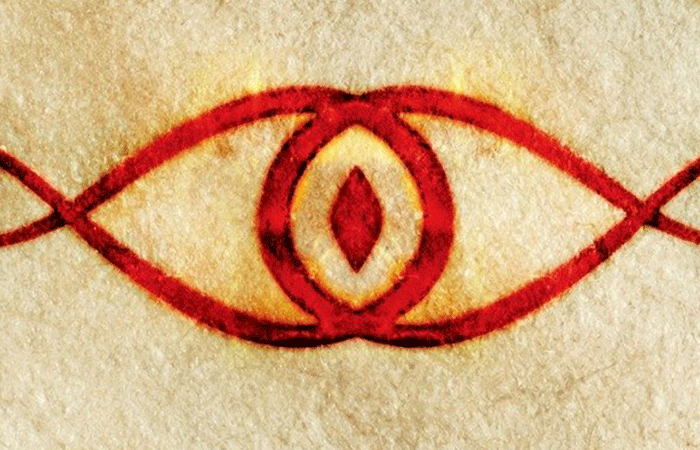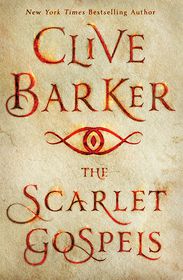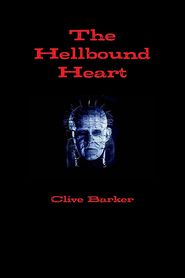Preaching the Unholy Scriptures of Clive Barker’s The Scarlet Gospels
 It can be a treacherous journey when an author decides—decades later—to resurrect a beloved character as the centerpiece of a new book. Is it desperation? Maybe simple fan service? Or something more organically grounded: a long-delayed reunion, characters coming alive once again for an adventure that will add to their legacy? Stephen King made us wait 36 years to revisit the life of Danny “REDRUM” Torrance in Doctor Sleep. Did The Shining strictly call for a sequel? No. Was it a compelling read that added layers to an existing literary character? Yes.
It can be a treacherous journey when an author decides—decades later—to resurrect a beloved character as the centerpiece of a new book. Is it desperation? Maybe simple fan service? Or something more organically grounded: a long-delayed reunion, characters coming alive once again for an adventure that will add to their legacy? Stephen King made us wait 36 years to revisit the life of Danny “REDRUM” Torrance in Doctor Sleep. Did The Shining strictly call for a sequel? No. Was it a compelling read that added layers to an existing literary character? Yes.
The Scarlet Gospels
The Scarlet Gospels
By Clive Barker
Hardcover $26.99
Horror/fantasy novelist Clive Barker—who King once dubbed “the new face of horror”—has joined the back-to-the-well crowd with The Scarlet Gospels, a novel that promises to be the final chapter in his multi-format Hellraiser mythos. It has been almost 27 years since the debut of The Hellbound Heart novella, in which Barker first introduced the Lemarchand puzzle box (a sort of hotline to to Hell for those who solve it) and the Cenobites, those leather-clad, pain-as-pleasure demons. The Hellraiser film series made a horror icon out of Doug Bradley’s portrayal of Pinhead, a relatively minor character in The Hellbound Heart who quickly became the nails-in-the-face poster demon for the franchise.
After inflicting his special brand of pointy-hooks-in-flesh mayhem on a group of black arts magicians in the opening chapter, Pinhead (who’s often simply referred to as Hell Priest) develops a doozy of a career path to all-consuming dark glory and control of Hell itself, involving not only wholesale genocide, but a thunderous tete-a-tete with the King of Hell. Supernatural investigator Harry D’Amour—and a troupe of colorful sidekicks—find themselves in Pinhead’s realm, on a mission to not only rescue one of their own, but to put a stop to the end-0f-times madness.
Horror/fantasy novelist Clive Barker—who King once dubbed “the new face of horror”—has joined the back-to-the-well crowd with The Scarlet Gospels, a novel that promises to be the final chapter in his multi-format Hellraiser mythos. It has been almost 27 years since the debut of The Hellbound Heart novella, in which Barker first introduced the Lemarchand puzzle box (a sort of hotline to to Hell for those who solve it) and the Cenobites, those leather-clad, pain-as-pleasure demons. The Hellraiser film series made a horror icon out of Doug Bradley’s portrayal of Pinhead, a relatively minor character in The Hellbound Heart who quickly became the nails-in-the-face poster demon for the franchise.
After inflicting his special brand of pointy-hooks-in-flesh mayhem on a group of black arts magicians in the opening chapter, Pinhead (who’s often simply referred to as Hell Priest) develops a doozy of a career path to all-consuming dark glory and control of Hell itself, involving not only wholesale genocide, but a thunderous tete-a-tete with the King of Hell. Supernatural investigator Harry D’Amour—and a troupe of colorful sidekicks—find themselves in Pinhead’s realm, on a mission to not only rescue one of their own, but to put a stop to the end-0f-times madness.
The Hellbound Heart
The Hellbound Heart
By Clive Barker
Paperback $19.95
Barker’s welcome return to the land of unadulterated horror is an apocalyptic explosion, wave after crimson wave of fleshy manipulation, disfigurement, and dismemberment. It has been ages since the author has dug so feverishly into his horror roots, dishing out generous portions of evisceration, disemboweling, and a busted gut full of varied grotesqueries. The unrestrained gore is frequent and graphic, with descriptive prose that mixes elegance with outright slaughterhouse abandon.
There’s an uncharacteristically Whedon-y cadence to the dialogue between Harry and his friends that’s not exactly Barker’s typical style, but the comical sniping provides some lighter moments in a pitch black narrative, particularly welcome once some very bad things begin to happen to this quasi-Scooby gang. Oh yes, we’re talking some particularly terrible, awful, horrible things.
The most daring aspect of The Scarlet Gospels is its journey into the thriving bowels of Hell itself. Barker’s vision of Pinhead’s bleak motherland (and its assorted mutated inhabitants) is where he takes his biggest creative risk. When no less than Dante has given us the definitive vision of Hell’s horrors, measuring up is a tall order, to say the least. Happily (though perhaps that is not the right word for it), I quickly found myself digging the sulphur-infused community, its uniquely harsh architecture, deadly wild life, and odd hierarchies.
Whether Barker felt a deep burning for artistic closure, or grudgingly caved to readers’ demands,The Scarlet Gospels shows the author is back on the horror beat with a vengeance. He does large-scale horror like no one else, and I’ve truly missed his voice.
Barker’s welcome return to the land of unadulterated horror is an apocalyptic explosion, wave after crimson wave of fleshy manipulation, disfigurement, and dismemberment. It has been ages since the author has dug so feverishly into his horror roots, dishing out generous portions of evisceration, disemboweling, and a busted gut full of varied grotesqueries. The unrestrained gore is frequent and graphic, with descriptive prose that mixes elegance with outright slaughterhouse abandon.
There’s an uncharacteristically Whedon-y cadence to the dialogue between Harry and his friends that’s not exactly Barker’s typical style, but the comical sniping provides some lighter moments in a pitch black narrative, particularly welcome once some very bad things begin to happen to this quasi-Scooby gang. Oh yes, we’re talking some particularly terrible, awful, horrible things.
The most daring aspect of The Scarlet Gospels is its journey into the thriving bowels of Hell itself. Barker’s vision of Pinhead’s bleak motherland (and its assorted mutated inhabitants) is where he takes his biggest creative risk. When no less than Dante has given us the definitive vision of Hell’s horrors, measuring up is a tall order, to say the least. Happily (though perhaps that is not the right word for it), I quickly found myself digging the sulphur-infused community, its uniquely harsh architecture, deadly wild life, and odd hierarchies.
Whether Barker felt a deep burning for artistic closure, or grudgingly caved to readers’ demands,The Scarlet Gospels shows the author is back on the horror beat with a vengeance. He does large-scale horror like no one else, and I’ve truly missed his voice.

